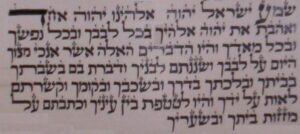 My paper, “From the Shema to the Homoousios: The Jewish Roots and New Testament Origins of the Nicene Creed,” has now been uploaded to my page on Academia.edu. Critics of the Nicene Creed routinely characterize it as a Hellenized distortion of the Christian faith. Even N. T. Wright has complained about the fourth-century church “trying to make theological bricks without the biblical straw.” Of course, anti-Trinitarian religions such as Mormonism and Jehovah’s Witnesses use these criticisms as justification for denying the doctrines of the Trinity and the Incarnation defended in the Creed.
My paper, “From the Shema to the Homoousios: The Jewish Roots and New Testament Origins of the Nicene Creed,” has now been uploaded to my page on Academia.edu. Critics of the Nicene Creed routinely characterize it as a Hellenized distortion of the Christian faith. Even N. T. Wright has complained about the fourth-century church “trying to make theological bricks without the biblical straw.” Of course, anti-Trinitarian religions such as Mormonism and Jehovah’s Witnesses use these criticisms as justification for denying the doctrines of the Trinity and the Incarnation defended in the Creed.
In response, I argue in the paper that the Creed is thoroughly rooted in the Jewish religious soil of the Old Testament and that it originated from creedal or confessional elements of the New Testament. It is thus constructed from what Wright called “the biblical straw.” The paper begins with the Shema (Deut. 6:4), the Jewish creed affirming one God, and concludes with a defense of the Nicene Creed’s use of the word homoousios, meaning “same substance” or “same essence.” A short version of this paper is being presented this afternoon at the annual meeting of the Evangelical Theological Society in Boston.
The picture shown here is of Deuteronomy 6:4-9. The last letters of the Hebrew words shema (“Hear”) and echad (“one”) were often written large, as here, to express the importance of the sentence, “Hear, O Israel, YHWH our God, YHWH one.”